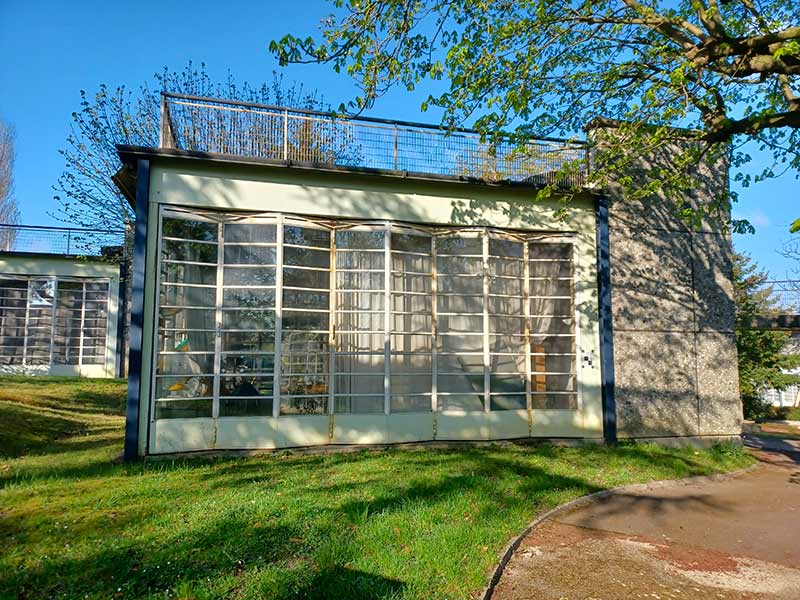Suresnes. On May 15, the Memorial Museum of Terrorism (MMT) organized an international conference at the National Center for Arts and Crafts (Cnam) in Paris, where around twenty pieces from the collections were exhibited to the public. These collections reflect the complexity of the MMT project, which encompasses both immediate contemporary history (2015 attacks), political history (terrorist movements in the 20th century) and memory politics (victims’ associations and trials). From the embroidered dress commemorating the victims of Utøya (Norway) to a trash can used in Hezbollah attacks in the 1980s, including children’s drawings, the MMT collections are disparate. The pieces linked to the victims and commemorations thus sit alongside everyday objects, court sketches and judicial seals. Henry Rousso, president of the prefiguration mission, explains that the collections will contain numerous seals from the trials held in France, since the MMT has obtained from the Ministry of Justice to archive them: he specifies that after the trials “nearly 80% of seals are usually destroyed in France” and that MMT therefore works on memory by preserving them.
Buildings from 1935 to be restored for €95 million
The memorial aspect is also embodied in the site chosen for the MMT in Suresnes, the former outdoor school at the foot of Mont Valérien. The future MMT will have a set of buildings from 1935, classified as “Historic Monuments (2002)”. Designed by the mayor of Suresnes as a green haven for sick children, the Outdoor School (EPA) embodied an innovative pedagogy, with classrooms opening onto a park and bright buildings with bay windows on three sides . A large parenthesis-shaped building, facing north, protected ten smaller pavilions scattered throughout the wooded park from the wind. Although each building had a chromatic identity, the whole remained homogeneous through the whiteness of the concrete walls and the shape of the windows. Henry Rousso specifies that “ all buildings will be restored identically » by the chief architect of Historical Monuments, Pierre-Antoine Gatier, under the direction of the Operator of Heritage and Cultural Real Estate Projects (OPPIC). The architect Fanny Houmeau, who assists Pierre-Antoine Gatier, specified on May 15 that the archives of the Outdoor School will make it possible to restore most of the structures and mechanisms of the buildings, such as “the metal frame of the bay windows”constitutive element of style “functionalist”The same applies to the minimalist decorative elements, which will be restored with materials close to the original ones. The opening mechanisms (sliding or rolling) will have to be repaired or even modified on a case-by-case basis: the ten pavilions are not all identical.
“An open place”
Most of the work will focus on the main building in three wings, intended to accommodate the entrance hall, the permanent 900 square meter exhibition, an auditorium, temporary exhibition rooms and workshops for children. Here again, the opening of the bay windows onto the park remains essential in the rehabilitation project. This park will be replanted, “with historical essences » similar to those of the 1930s, according to Fanny Houmeau. And Henry Rousso adds that the park will be accessible to the public “without conditions” because MMT must be “ an open place » : he concedes, however, that the question of security arises and that it is taken into account in the rehabilitation project.
Trash bin having contained explosives under court seal, plastic, cardboard, wax, rope, second half of the 20th century, gift from the Paris Judicial Court.
© MMT
There remains the “memorial” aspect of the MMT, which will be housed in the largest of the park’s ten pavilions. This two-story, octagonal-shaped pavilion is located in the center of the site: it will centralize the circulation of the public, and will be accessible directly from the entrance to the MMT. Designed as a place of contemplation for victims’ families, survivors and the public, it will house a work listing the names of victims of attacks in France and French victims abroad since 1974 (date of the decree which created the medal of victim of terrorism). Henry Rousso specifies that the work is the subject of an international competition, a work which will have to be evolving in the event of a new attack: “ MMT is indeed working on an ongoing phenomenon. » He adds that it is not a question of “ build a mausoleum ». The total budget for the work is around 95 million euros over just over two years, a significant amount.
If the budget for the works seems guaranteed by four ministries, the ambitious MMT project risks coming up against budgetary austerity in the medium term: despite the support of eight ministries, founding members of the GIP, the MMT concedes that its operating budget for 2025 has already fallen (it is 583,550 euros in 2024). The MMT adds that the budget planned for opening in 2027 is still under discussion with the ministries and the Prime Minister’s services. A sponsorship manager was recently hired to “strengthen the solidity of the project”. Like many cultural institutions, the MMT must therefore diversify its resources, despite the support of ministries for this project, the aspect of which Henry Rousso highlights. “experimental”.







